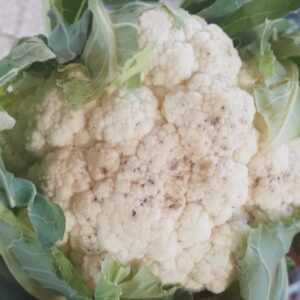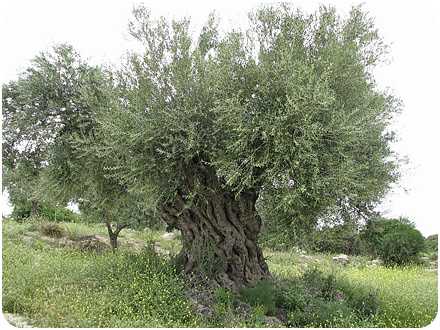The Candle
By Natan Yonatan
Thus man created the candle:
He drew tallow’s essence, soft and pale
Suspending his wick of life within
and thus the candle was whole.
He kindled it with a small flame
And just like Man, standing tall till the end,
It burned slowly in the dark, blazing and flickering,
Like the spirit of the blowing breeze,
Loving
The circle of butterflies
Tallow spilling like tears onto books
On a poet’s table
As a soldier seals a letter in his tent
And on a late stormy night
When thunderbolts crash in the dark
And no sky or bright stars are in sight
You light the remnant of the candle
And behold,
there’s hope for the world to clear anew.
– Translation: Aliza Raz-Meltzer
The Place: Athens. The Time: Once upon a time, many years ago…
The people of the city of Athens gather on the highest peak in the city to view the competition that will determine who wins the vaunted title “Patron God of the District of Attica,” and within it the city of Athens. Two impressive gods submit their candidacy: Poseidon, god of the seas, oceans, horses (and earthquakes), and his niece Athena, goddess of wisdom, art and justice. To win the coveted title, each of the two must offer the Athenians one gift from which they will choose the victor. Poseidon opens, striking the ground with his harpoon. The ground cracks and a spring bursts forth from the crevice, but the water is salty, and the Athenians find no use for it. (In Version #2, a horse bursts from the ground). Second, Athena offers her gift, and from the earth she grows an olive tree. The Athenians unanimously choose the tree that will accompany them henceforth, from which they will produce food, light, heating, and building material.
At first glance, the Athenians’ choice apparently reflects a purely practical decision. Yet, a careful look at the story seems to me to indicate a vote against the pitchfork violently thrust into the ground to split it (and against the god who stuck it, known for his fits of rage and his fickle character), but rather in favor of growth, nourishment, and continuity. The olive tree will accompany the Athenians and all the inhabitants of the Mediterranean basin, serving as a human symbol of victory and success, as well as a symbol of peace, tranquility and harmony. As The Flood begins to subside, the dove will return to Noah with an olive leaf in its beak, a sign that the waters have calmed, the chaos has subsided, and growth and life submerged for many days in deep, turbulent waters, now peeked through. Athena will defeat Poseidon here, as well. And in the circuitous way that stories wind, the olive tree and the oil it gives to humans will be that which will enable the Hasmoneans to stand against the Greeks and regain their religious and national freedom. The same flask of oil, the incarnation of the tree of Athena, Goddess of Justice, will also bring justice and harmony to the purified, renewed Temple of Jerusalem. Hanukkah, the Hebrew festival of light and fire, parallels similar holidays in other cultures. Each year in winter’s midst as darkness prevailed, people felt compelled to light a thin candle as a reminder that despite the gnawing gloom, the days of light will yet come. It seems that as the darkness becomes vast and enveloping, we need a candle and light more than ever – simply, quietly, gradually, one after another, added consecutively, the calm and modest light of the menorah’s flames intensifies. When there is even one thin candle, the darkness is no longer absolute.
These are the days when the end of the harvest season is celebrated, when the fruit of probably the most modest and self-denying tree is gathered to the olive press. This is a tree that hardly requests a thing, satisfied with the little that is at hand. A tree that needs nearly nothing at all, maintaining its quality for years on end, whether scorched or rainy, hot or cold – the durable, resilient olive tree will endure and grow and and produce olive oil from which we can kindle a light, consume for our health, soften our skin, and heal our wounds and diseases.
The olive harvest season is the last in the chain of harvest seasons: we have reaped, gathered, picked, pruned, and collected all the bounty of our fields into the storehouses and the wine press, shone with pride over our successes or worried over our failures. And at the finale of this drama, voila, the olive harvest season debuts. There wasn’t much to do here, except mainly to hope for an adequate measure of cold weather and rain, and a nice, hard “first (and second) rain” to wash the olives.
Humbly, silently we harvest these hard fruits, which will burst with juice if we press hard on them, but not the kind of juice you want to lick off your fingers, like grapes, figs, pomegranates, or dates. This is a strange, bitter juice which will strengthen our bodies in the long run, much more than the sugar of sweet fruits. It is the one that will illuminate the long winter nights now upon us. In its humility and simplicity, the olive tree needs no sweet festivals; this is a time of winter and introspection, in the quiet calming silence that a thin, flickering candle flame brings us in the dark of night.
It is truly amazing to see the golden oil burst forth from such hard, unattractive fruits. But in truth, they doesn’t start out golden at all: From a rather dirty and disgusting sediment, a rather foul and disgusting liquid is produced. Only after it stands at rest in the dark does the oil separate from the dirty water and float above it, pure and light. I find this process to be both wonderful and symbolic. It teaches us a lot about what can seem futile or vain and what you can produce when you actually try, sometimes with effort and obstinacy, give it a chance, and let time run its course without our interference. And then there’s all the health, goodness and light to be found at the end of the process…

The olive tree itself is a tree of light: its leaves, which do not fall in winter, cover it throughout the seasons, sporting a different shade on either side. The leaf’s upper side is dark green (olive green), while the lower side is a silver-white shade covered with a thin layer of fuzz that reflect sunrays and protects the leaf from drying out. As the leaves blow in the wind, the alternating silver and green hues are luminous and shimmering. Much has been written and said about the healing properties of olive oil (for stomachaches, coughs and earaches, to name just several). However, drinking an infusion of olive leaves can offer health benefits: their antioxidants and flavonoids help lower cholesterol, reduce blood sugar levels, and lower high blood pressure and improve blood flow in the arteries. As these leaves contain anti-fungal, anti-bacterial and anti-inflammatory substances, they are effective in relieving and preventing the flu.
Hanukkah is a holiday symbolizing a struggle for national and religious identity. Generally, it is connected to the struggle against others – connecting to yourself comes simultaneously with disconnecting from the outside world. There are those who would argue that this is compulsory. I would like to suggest that it is not. The olive from which oil was produced for the Temple lamp, the olive that appeared after the flood, the olive that sprouted in Athens in Attica, and the olive that a Syrian, Greek, Italian, Spanish, Californian, Lebanese, Palestinian or Israeli farmer processes, are all members of a family encompassing over 2000 varieties of olives, each of which descended from wild olives that grew here even before humanity began its journey, its search for identity and its wars.
Every type of olive enjoys good, rainy, cold years, and all suffer from the recent years of drought and heat. Yet despite the similarities between them, each olive variety is still different and diverse: some are ancient heritage varieties grown in olive vineyards passed down through generations, others are members of captive varieties developed for intensive industrial cultivation. They are all olives, but each has its own identity, a deep rooting in its own plot of land. Such calm and safe, stable and stubborn rooting, with no hint of apology or aggression, alienation or entrenchment, bring blessing, growth and fruitfulness. How I wish this were true for us as well…
May we all know how to light a small candle,
for us,for those who love us,For the kidnapped,
for whom we wish to return today,
And also to shine a light upon those whom we find hateful and threatening, foreign. Perhaps we will see a ray of light shining upon us from the other side as well, trying to enlighten us and find the smile and healing within us.
May we all be blessed with a bright, heartwarming and healing holiday,
Alon, Bat-Ami, Dror, Orin and the entire Chubeza team
________________________________________
WHAT’S IN THIS WEEK’S BOXES?

Some of this week’s cauliflowers are beginning to sport small, dark dots of oxidation on their scalps. Do not panic! They are perfectly safe to eat. To slow the process, simply scrape off the black dots before storing the cauliflower in the refrigerator. Then enjoy it! We believe it’s really a shame to throw away fresh, good cauliflower simply because of unattractive, easily removed spots…Enjoy!
Monday: Celery/celeriac, arugula/tatsoi, lettuce/ Swiss chard/kale/spinach, kohlrabi/fennel, carrots/sweet peppers, broccoli, sweet potatoes/slice of pumpkin, parsley/coriander/dill, tomatoes, cucumbers.
Small boxes only: Baby radishes/daikon/turnips.
Large box, in addition: Beets, scallions/fresh onions, long Thai lubia beans/ green or yellow string beans/snow peas/Jerusalem artichokes, cabbage/cauliflower.
FRUIT BOXES: Kiwi, red oranges/clementinas/bananas, avocados, red or green apples.
Wednesday: Baby radishes/daikon/turnips, arugula/tatsoi, lettuce/Swiss chard/kale/spinach, cabbage/kohlrabi, broccoli, sweet potatoes, parsley/coriander/dill, tomatoes, cucumbers, scallions/fresh onions.
Small boxes only: Celery/celeriac.
Large box, in addition: Beets/sweet peppers, carrots, cauliflower, long Thai lubia beans/ green or yellow string beans/Jerusalem artichokes.
FRUIT BOXES: Kiwi, oranges/clementinas/pomelit/red grapefruit/bananas, avocados, red or green apples.

